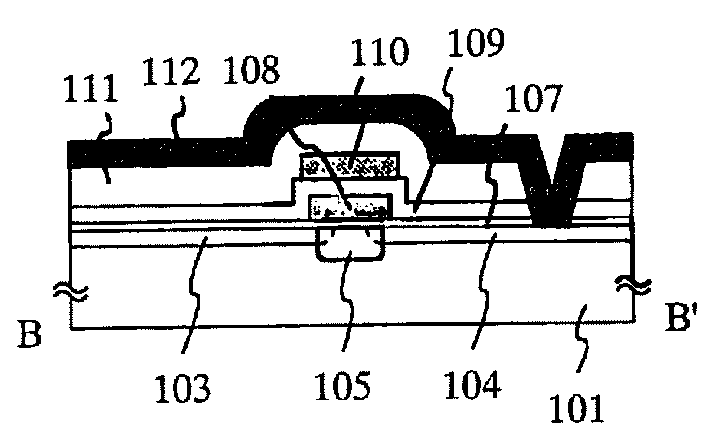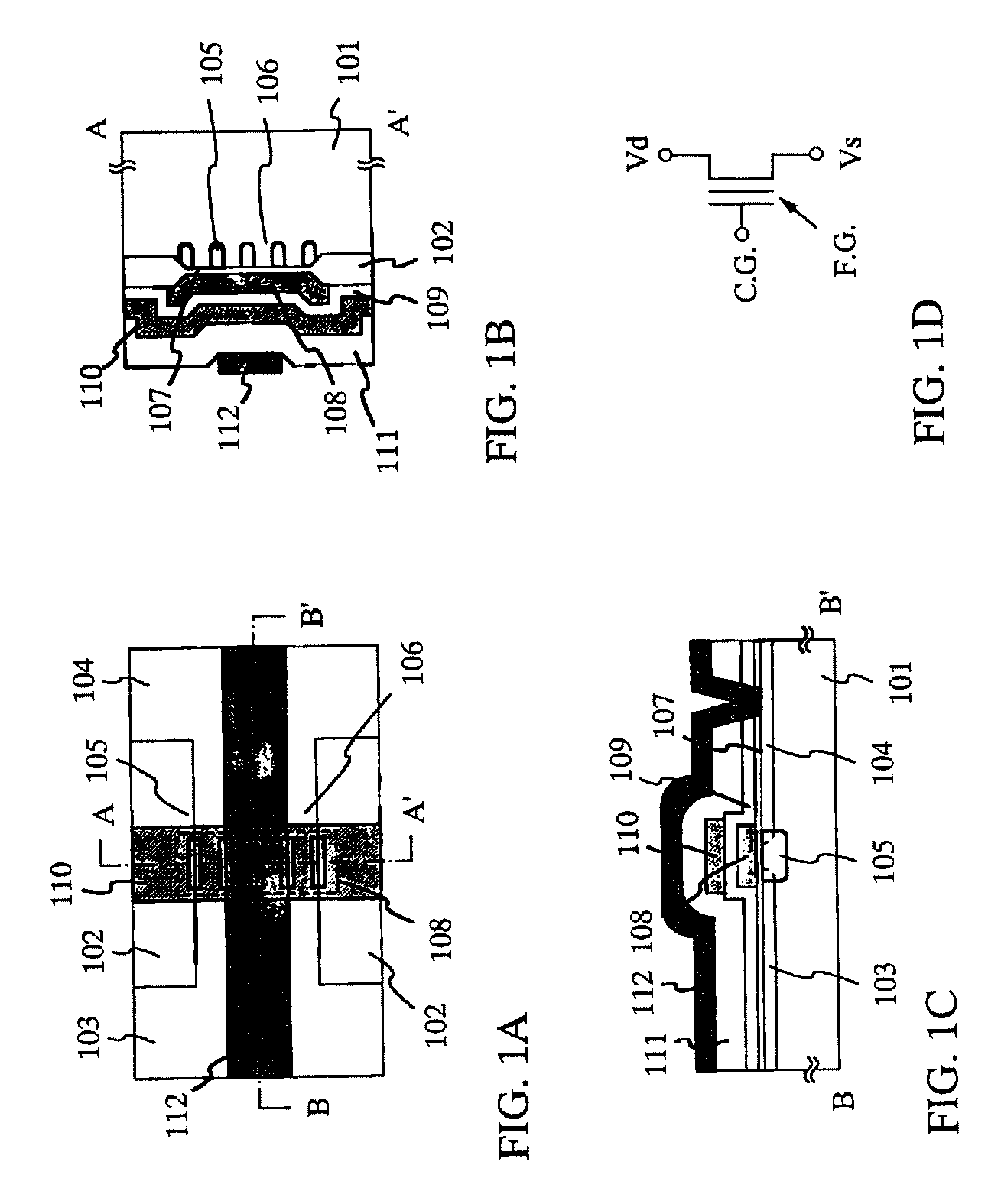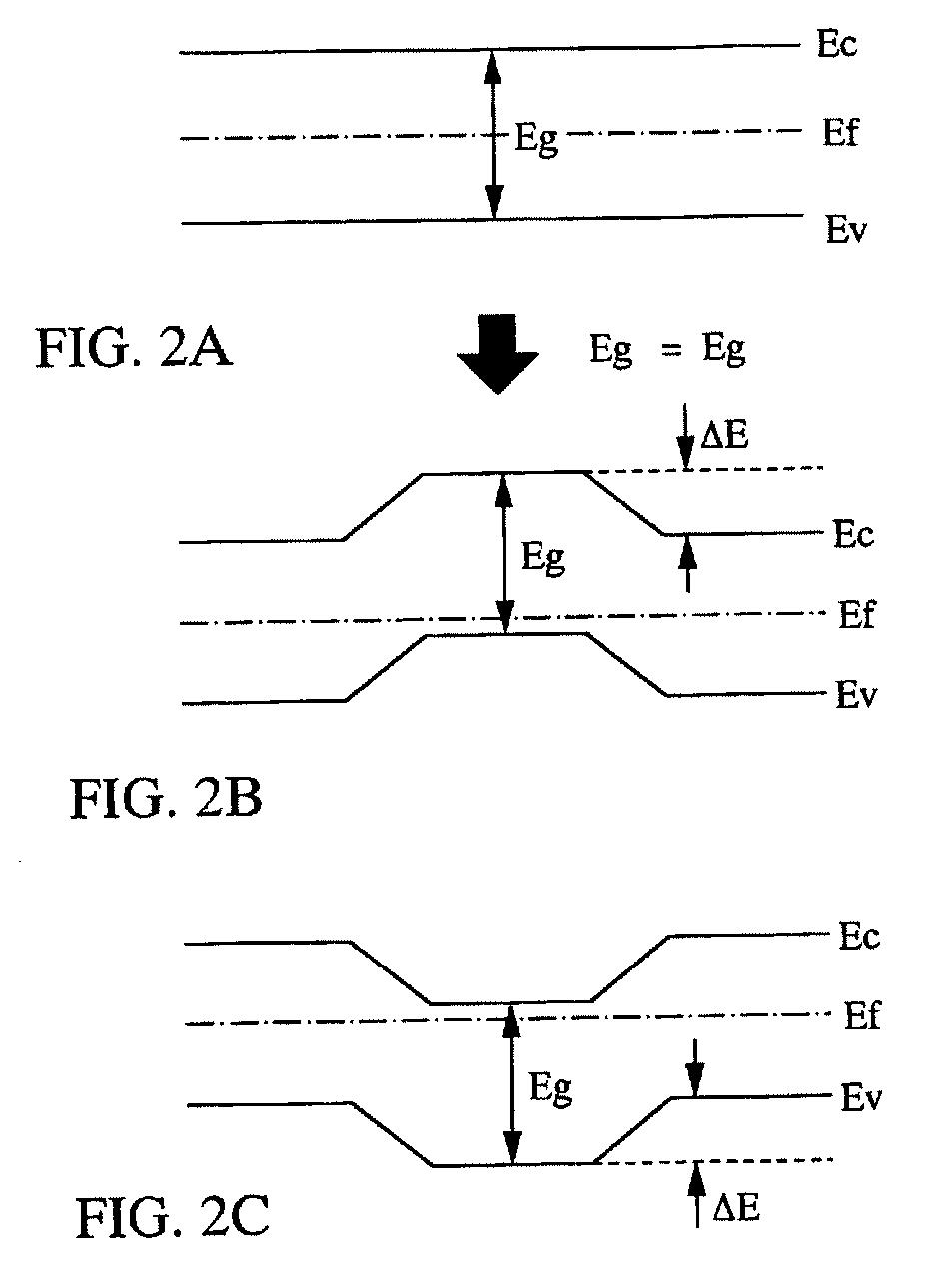Semiconductor device having buried oxide film
a semiconductor and oxide film technology, applied in the direction of semiconductor devices, electrical devices, transistors, etc., can solve the problems of source-drain breakdown voltage, data loss of dram or sram, serious problems in the operation of nonvolatile memories,
- Summary
- Abstract
- Description
- Claims
- Application Information
AI Technical Summary
Benefits of technology
Problems solved by technology
Method used
Image
Examples
embodiment 1
[0043]This embodiment will be described with reference to FIGS. 1A-1D, which are a top view, sectional views, and a circuit representation of a non-volatile memory to which the invention is applied. This embodiment is directed to an EEPROM having a basic stacked structure.
[0044]In FIGS. 1A-1D, reference numeral 101 denotes a single crystal silicon (p-type silicon) substrate; 102, field oxide films formed by a LOCOS method; 103, a source region to which arsenic (or phosphorus) is added; and 104, a drain region. Although this is an example structure of an n-type EEPROM, it is also possible to construct a p-type EEPROM. A p-type EEPROM can be constructed by forming source and drain regions by adding boron to an n-type silicon substrate.
[0045]Reference numeral 105 denotes impurity regions (hereinafter referred to as pinning regions) that are the most important feature of the invention. The pinning regions 105 are formed by adding an impurity having the same conductivity type as the sili...
embodiment 2
[0106]This embodiment will be described with reference to FIGS. 6A-6D, which are a top view, sectional views, and a circuit representation of a non-volatile memory according to the invention that uses a single crystal silicon substrate having a buried oxide film. This embodiment is directed to an EEPROM having a basic stacked structure.
[0107]In FIGS. 6A-6D, reference numeral 600 denotes a single crystal silicon (p-type silicon) substrate; 601, a buried oxide film; 602, field oxide films formed by a LOCOS method; 603, a source region to which arsenic (or phosphorus) is added; and 604, a drain region.
[0108]Although this is an example structure of an n-type EEPROM, it is also possible to construct a p-type EEPROM. A p-type EEPROM can be constructed by forming source and drain regions by adding boron to an n-type silicon substrate.
[0109]The single crystal silicon substrate having a buried oxide film may be a SIMOX substrate, a UNIBOND substrate (a smart cut method is used), or the like....
embodiment 3
[0141]The two-layer polysilicon EEPROMs of the first and second embodiments are classified into a byte erasure type (data erasure is performed on a unit memory element basis) and a flash type (data of collective memory elements are erased en bloc).
[0142]The flash EEPROM is also called the flash memory. The invention can be applied to either of the two types of EEPROMs.
[0143]There are various data erasing methods such as a source erasure type, a source / gate erasure type, and a substrate erasure type. The invention can be applied to any of those methods.
PUM
 Login to View More
Login to View More Abstract
Description
Claims
Application Information
 Login to View More
Login to View More - R&D
- Intellectual Property
- Life Sciences
- Materials
- Tech Scout
- Unparalleled Data Quality
- Higher Quality Content
- 60% Fewer Hallucinations
Browse by: Latest US Patents, China's latest patents, Technical Efficacy Thesaurus, Application Domain, Technology Topic, Popular Technical Reports.
© 2025 PatSnap. All rights reserved.Legal|Privacy policy|Modern Slavery Act Transparency Statement|Sitemap|About US| Contact US: help@patsnap.com



